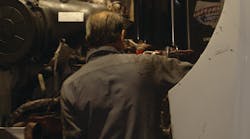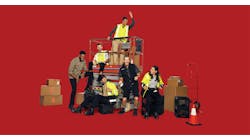No technician I have ever met would leave wheel nuts loose because he/she didn’t feel like tightening them. But, quite a few technicians have gotten distracted and let a truck go out with loose wheel nuts.
Everyone makes mistakes.
In my classes, I frequently ask if anyone has ever caused a worse problem doing a repair. The only answers are either you have or you are lying. Sorry for being harsh.
The fact is, when anyone touches an asset, there is a small chance they will mess something up. Why? Because of something called iatrogenic failure.
The term iatrogenic failure comes from the medical field and is defined as a disease that is caused by medical treatment. In the field of maintenance, an iatrogenic failure is one caused by the service person.
We know some drivers of maintenance and repair errors are because of such factors as fatigue, being preoccupied or not having enough light. Another possible reason for mistakes is repeat repairs or rework.
The Smell of Burned Plastic
I remember one particular job where I unintentionally created a worse problem when doing a repair.
I used to have a company that designed, built, installed and serviced motor fuel management systems (products from Gasboy or Petrovend). I was called in to service a system I had installed on Long Island, N.Y. I lived in Philadelphia at the time.
I arrived on a Friday afternoon and knew that if I got the job done quickly, I could avoid the bulk of rush hour and get home in three to four hours. However, if I delayed, it would probably take me five or more hours before I got home.
I was able to quickly diagnose the problem and made the repair in about 45 minutes.
Moving quickly, I installed the metal cover but didn’t notice that a couple of wires got caught by the lip of the cover. I felt a little tingle in my hands, heard the circuit breaker “pop” and smelled the characteristic acrid smell of burned plastic.
I removed the cover and saw smoke coming from the circuit boards. In my haste, I fried all the circuit boards when the main power was routed through the 5V supply. The entire unit was ruined.
I felt completely stupid and muttered some things that I would not repeat in polite company.
I did make it home in a shorter time but I had to return on Monday with a full set of circuit boards. I did the subsequent repair much more carefully.
Drivers for Errors
Here is a list of some of the more common causes for iatrogenic failures by technicians:
A. Preoccupation.
B. Pressure to complete the work.
C. Fatigue.
D. Drugs (both legal and illegal).
E. Hangover or drunkenness.
F. Lack of competence on a piece of equipment or the job.
G. Lack of strength, flexibility, endurance, visual acuity, etc.
H. Lack of mental horsepower.
I. Injury (not healed yet).
J. Bad attitude.
K. Anger at the company (sabotage).
L. Working at heights with a fear of heights.
M. Environmental factors (bad lighting, too cold, too hot, etc).
N. Wrong parts.
O. Lack of specialized tools.
P. Lack of equipment (like lifting gear).
Q. Lack of diagrams, drawings, wiring schematics, etc.
The challenge is to manage or eliminate as many of these error drivers as possible. Presumably once a cause is eliminated, the chance of a mistake is lowered.
Get Out on the Floor
Clearly, the supervisor is in the catbird seat for many of the potential problem areas. Typically, though, supervisors are spending too much time there bogged down by computer work (what used to be called paperwork), rather than overseeing work.
A best practice is for supervisors to be on the shop floor at least 65 percent of their time. Only if they are spending time around their technicians can supervisors notice issues.
But it’s not all up to supervisors. Everyone needs to be involved in managing or eliminating the causes of technician iatrogenic failure.
For causes A, C, D, E, F, G, I, J, K and L, everyone should complain to supervisors. Supervisors need to handle A, C, D, E, F, G, H and I.
Good job planning accounts for F, N, O, P and Q. All bosses should notice and help manage B, K and M and support good job planning.




